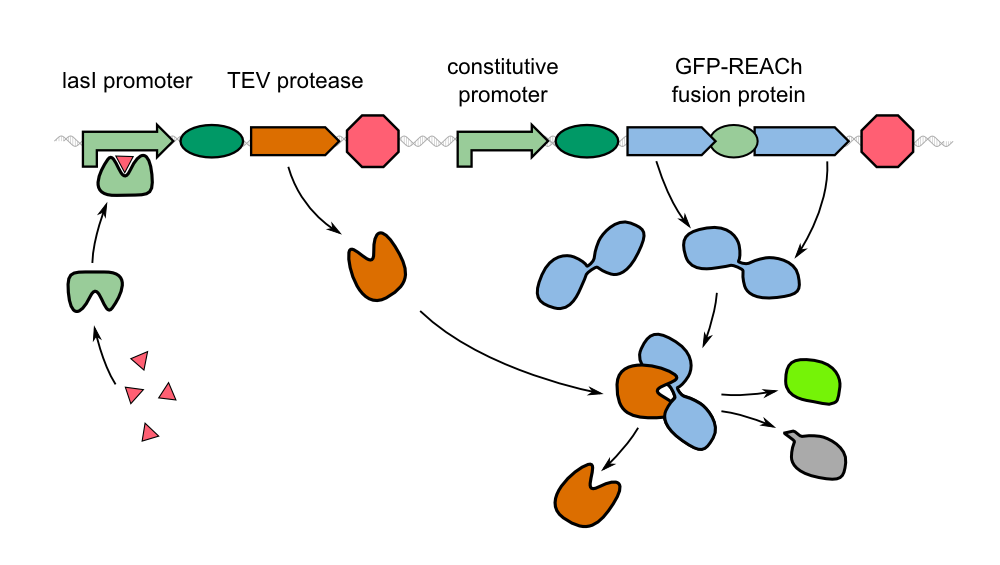2D Biosensor
With our 2D biosensor technology we are able to detect the pathogen Pseudomonas aeruginosa on solid surfaces. The sensor system is comprised of two distinct but inseparable modules, a biological part and a technical part:
- Sensing chips containing Cellocks, our engineered detective cells that fluoresce in the presence of the pathogen, make up the biological part of Cellock Holmes.
- Our measurement device WatsOn and the complementary softare Measurarty complete our sensing technology on the technical side.
Principle of Operation
Cellock Holmes is devised based upon a SynBio approach comprised of a two-dimensional biosensor and a measurement device. The two-dimensional biosensor is designed to recognize quorum sensing molecules secreted by the pathogen cells and to generate a distinct fluorescence signal, while the measurement device is designed to recognize and analyse the produced signal.
Our sensor cells are immobilized in agar chips. To make the chips, we mix the sensing cells, also known as Cellocks, with liquid LB agar. In the course of our project, we designed a casting mold specifically for the production of our agar chips. When the agar has cooled down, the chips are cut out of the mold and ready to use
[sensor chip].
Add: Flow chart of chip measurement
To detect P. aeruginosa cells, the chip is placed on a hard surface that is potentially contaminated with the pathogen. Subsequently, the chip is introduced into our measurement device WatsOn where it is incubated at 37 °C. After a short time, the chip is illuminated with blue light. WatsOn takes a picture of the chip and the software Measurarty analyzes any fluorescent signal. Depending on the intensity of the signal and the size of the spot, Cellock Holmes can calculate concentration and distribution of P. aeruginosa on the sampled surface.
|
 "
"
